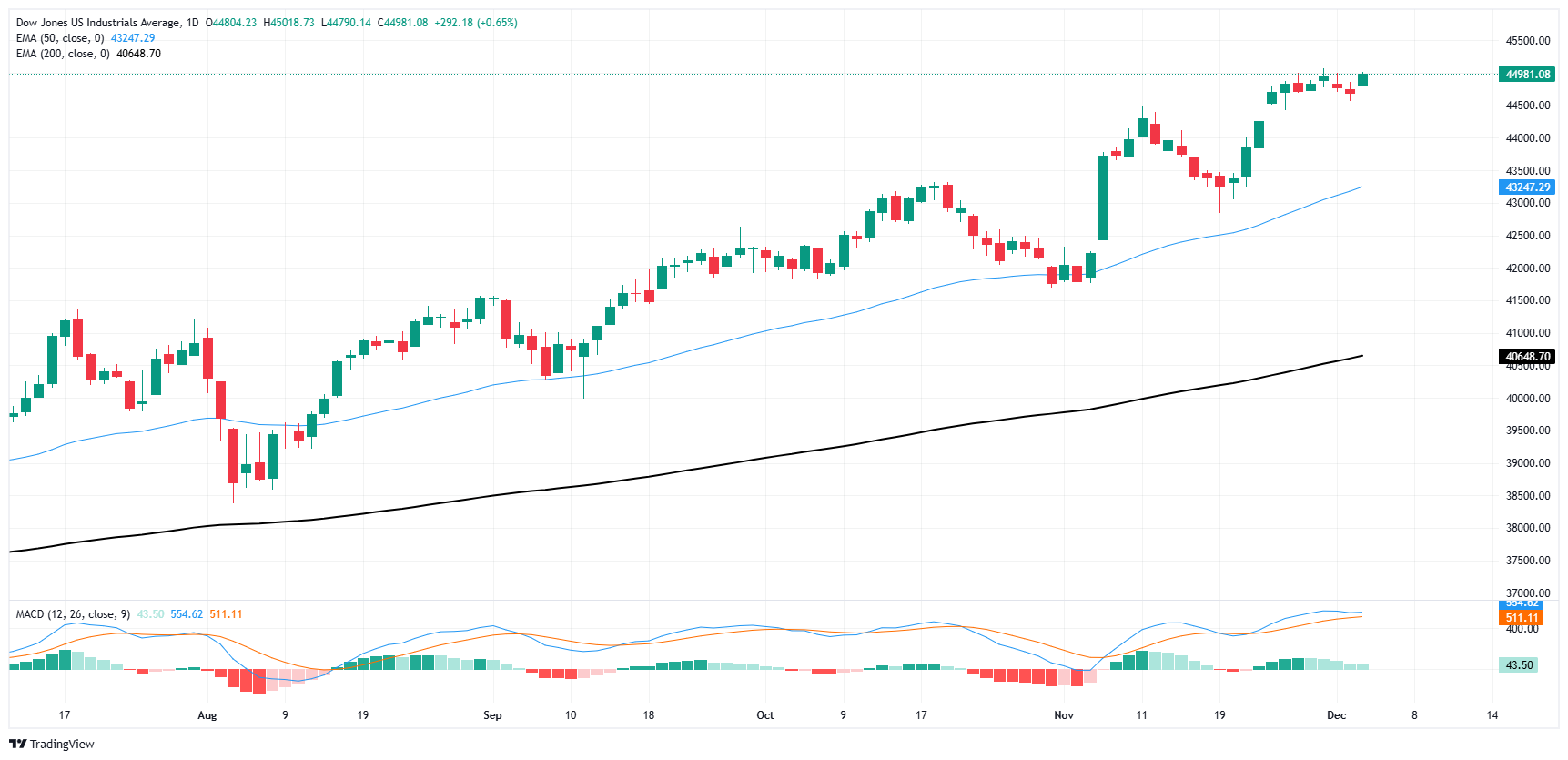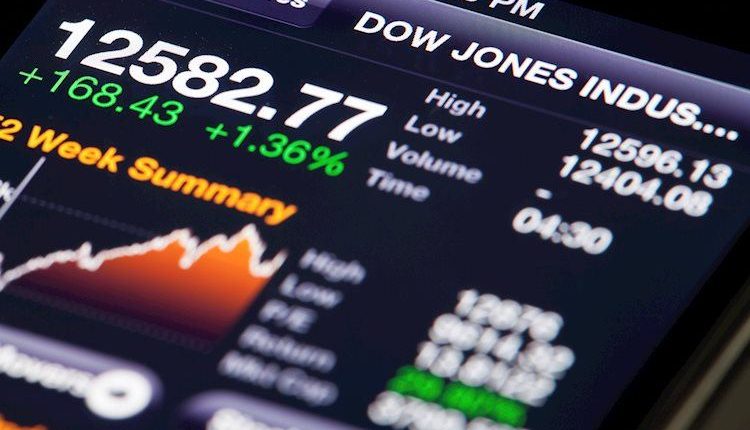- The Dow Jones rattled on Tuesday and continued to battle the 45,000 handle.
- ADP jobs report says the number of new worker positions grew less than expected.
- Despite firm gains in key stocks and sectors, the Dow Jones looked downward.
The Dow Jones Industrial Average (DJIA) churned in a tight range on Tuesday as investors grapple with mixed data and an overall headwind in non-tech stocks. ADP jobs figures hinted at a weaker-than-expected hiring phase in November, albeit by a slight margin.
Federal Reserve (Fed) Chairman Jerome Powell made an appearance on Tuesday, but the Fed head stuck closely to familiar talking points. Markets saw a brief spike in volatility, but the lack of momentous announcements regarding the odds of a rate cut in December saw investor interest wane.
US ADP Employment Change figures came in slightly below expectations for November, printing at 146K compared to the median market forecast of 150K. The figure eased further back from October’s initial print of 233K, which was revised sharply lower to 184K. With ‘preview’ Nonfarm Payrolls (NFP) figures showing potential slack in the labor market, investors are losing their sure-footedness about how Friday’s NFP print may turn out.
The US ISM Services Purchasing Managers Index (PMI) for November also slipped back to a three-month low, easing to 52.1 MoM compared to the forecast decline to 55.5 from October’s 56.0. While the Services ISM PMI component is still holding above the contractionary 50.0 level, the number still lost ground and pairs poorly with the Manufacturing PMI component released earlier this week that showed aggregated business opinions expect a slowdown in business conditions in the months ahead.
Dow Jones news
Despite battling into the high side throughout the day, the Dow Jones struggled on Wednesday, with roughly half of the board dipping into the red. Salesforce (CRM) rallied by a stunning 9% to cross $362 per share, climbing to all time highs on the back of continued promises of integrating AI into the company’s data management operations, despite missing the bottom line on earnings per share in its latest earnings call.
Dow Jones price forecast
Bullish momentum in the Dow Jones chart may have chilled in recent days, but bidders aren’t leaving much room for sellers to move. The major equity index is pinned close to record highs set north of the 45,000 handle. While buyers have yet to break into a fresh set of record highs this week, odds favor the high side as short momentum remains more of a bear trap than an opportunity.
Traders interested in an exhaustion play should anticipate a potential decline to the 50-day Exponential Moving Average (EMA), which is currently rising through 43,000. However, due to a long-standing pattern of bouncing off this key moving average, it’s advisable for traders to avoid trying to time the exit and instead follow the crowd as the market moves into a new upward leg.
Dow Jones daily chart
Dow Jones FAQs
The Dow Jones Industrial Average, one of the oldest stock market indices in the world, is compiled of the 30 most traded stocks in the US. The index is price-weighted rather than weighted by capitalization. It is calculated by summing the prices of the constituent stocks and dividing them by a factor, currently 0.152. The index was founded by Charles Dow, who also founded the Wall Street Journal. In later years it has been criticized for not being broadly representative enough because it only tracks 30 conglomerates, unlike broader indices such as the S&P 500.
Many different factors drive the Dow Jones Industrial Average (DJIA). The aggregate performance of the component companies revealed in quarterly company earnings reports is the main one. US and global macroeconomic data also contributes as it impacts on investor sentiment. The level of interest rates, set by the Federal Reserve (Fed), also influences the DJIA as it affects the cost of credit, on which many corporations are heavily reliant. Therefore, inflation can be a major driver as well as other metrics which impact the Fed decisions.
Dow Theory is a method for identifying the primary trend of the stock market developed by Charles Dow. A key step is to compare the direction of the Dow Jones Industrial Average (DJIA) and the Dow Jones Transportation Average (DJTA) and only follow trends where both are moving in the same direction. Volume is a confirmatory criteria. The theory uses elements of peak and trough analysis. Dow’s theory posits three trend phases: accumulation, when smart money starts buying or selling; public participation, when the wider public joins in; and distribution, when the smart money exits.
There are a number of ways to trade the DJIA. One is to use ETFs which allow investors to trade the DJIA as a single security, rather than having to buy shares in all 30 constituent companies. A leading example is the SPDR Dow Jones Industrial Average ETF (DIA). DJIA futures contracts enable traders to speculate on the future value of the index and Options provide the right, but not the obligation, to buy or sell the index at a predetermined price in the future. Mutual funds enable investors to buy a share of a diversified portfolio of DJIA stocks thus providing exposure to the overall index.
Read the full article here

